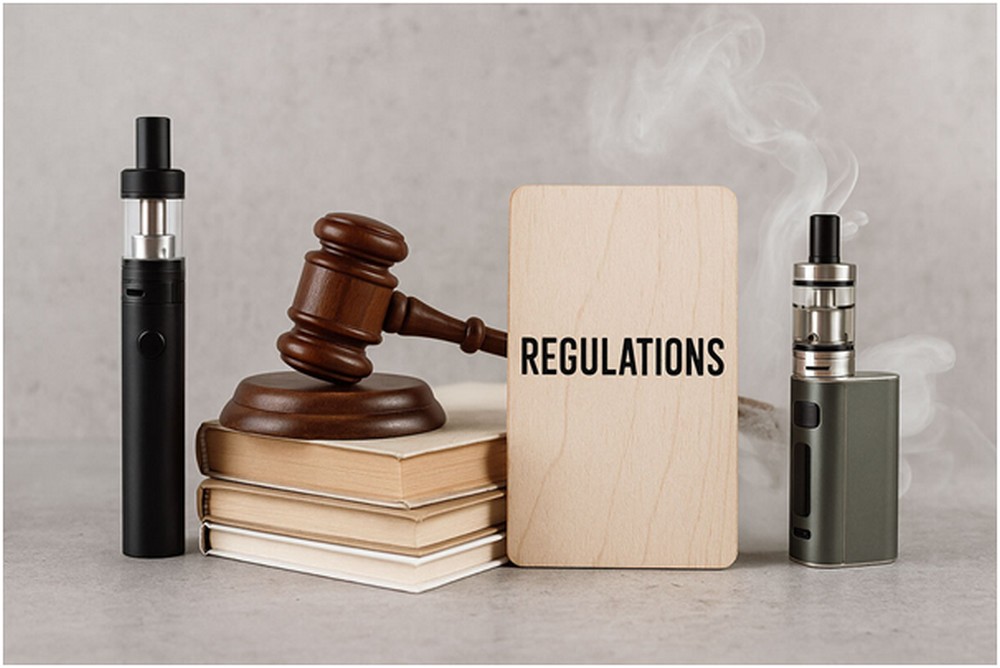The global cannabis industry is breaking into a new era, driven by evolving laws that are remaking its own landscape. From product categorization shifts to strict compliance measures, businesses are compelled to transform an elaborate mesh of rules in order to remain competitive and compliant.
This fast-paced market has also triggered innovation, resulting in the creation of sophisticated consumption products such as the Enso Shisha, which appeals to today’s cannabis users who are craving sophisticated experiences.
Federal Rescheduling: A Financial Game-Changer
One of the most important regulatory changes is the proposed reclassification of cannabis by the U.S. Drug Enforcement Administration (DEA) from a Schedule I to a Schedule III substance under the Controlled Substances Act.
This move would ease the liabilities of IRS Code 280E, and cannabis companies would be able to deduct typical business costs like rent and salaries. The potential financial relief can redefine the economic landscape of the industry, triggering growth and investment.
Secondly, rescheduling under Schedule I could pave the way for additional scientific investigation. Currently, Schedule I status severely limits scholarly and clinical investigations of cannabis, leading to a knowledge deficit and regulatory paralysis. Rescheduling to Schedule III would benefit not only the business sector but also public health as it would allow for more rigorous data regarding medical cannabis effectiveness and safety.
Compliance Complications Between Jurisdictions
The regulatory environment of the cannabis industry is a patchwork quilt of federal, state, and local laws with rules concerning cultivation, distribution, and sales. Compliances need to be highly alert to these challenges. Companies are recommended to recruit skilled compliance officers and put robust internal controls in place in order to survive effectively.
The issue is compounded further when businesses are spread across several states or nations. For instance, a CBD product that is lawful in California could necessitate entirely different packaging, lab reports, or even ingredient labeling in Michigan or Germany. Harmonized regulations are absent here, and this presents a cost and operation pinch in terms of its large impact on smaller operations. As the market expands, appeals for standardized platforms — most noticeably within the U.S. and EU—are on the increase.
Canada’s Streamlined Regulations: An Efficiency Model
Canada has moved proactively to simplify its cannabis regulations. Through amendments effective March 12, 2025, packaging and labeling requirements are simplified to provide more freedom in product presentation. These amendments have the goal of minimizing bureaucratic barriers and maximizing operational efficiency for cannabis companies.
Legal Risks Enhanced by Supreme Court Decisions
The U.S. Supreme Court’s ruling in Medical Marijuana, Inc. v. Horn broadened the ambit of the Racketeer Influenced and Corrupt Organizations Act (RICO) to encompass economic damages resulting from personal injuries. The ruling subjects cannabis businesses to a greater risk of litigation, especially on product mislabeling. Proper labeling and honest marketing have become more important than ever before to avert possible legal consequences.
In addition, attorneys weigh in that this precedent could encourage class-action lawsuits if consumers are injured by misleadingly labeled THC levels or unsupported medical assertions. Thus, quality control, third-party testing, and supply chain transparency are not a luxury — they are a requirement for maintaining legal and reputation defense.
Financial Pressures and Market Contraction
With the growth in the industry, financial pressures remain. Steep tax rates, over-regulation, and competition with the illegal market have resulted in layoffs and store closures.
As an example, Arizona saw a large decrease in cannabis jobs, falling from more than 20,000 positions in March of 2024 to a little more than 10,000 by January 2025. California saw a 5% reduction in the workforce, emphasizing the difficulties legal operations have in staying profitable.
Boosting Compliance Through Culture and Technology
To counter compliance issues, companies are encouraged to build a compliance culture and take advantage of technology. Building strong point-of-sale systems that link with inventory control can make record-keeping automated and regulatory compliant.
Audits and employee training on a regular basis further support compliance, warding off compliance risks that come with regulatory non-compliance.
Global Regulatory Trends and Their Implications
Globally, regulatory directions are also changing. Nations are reviewing their policies on cannabis; where some are legalizing it, and others are further restricting controls. These worldwide changes affect home markets since companies have to conform to new import/export regulations and global compliance requirements.
For example, the action taken by Germany to legalize recreational cannabis in 2024 has sent shockwaves in Europe as nations like the Netherlands, Switzerland, and the Czech Republic re-evaluate their regulatory stance. Meanwhile, stricter controls across Asia and the Middle East remind international players of the cost of non-adherence at astronomical levels. Global companies have to be flexible, well-informed, and culturally attuned in their operations.
The fate of the cannabis sector hangs in the balance of its ability to adapt to changing regulations. Challenges exist, but innovative compliance strategies, technology implementation, and a willingness to disclose will position businesses to thrive. As regulations change and evolve, being aware and responsive will be essential to players in the space who want to thrive in this dynamic environment.





